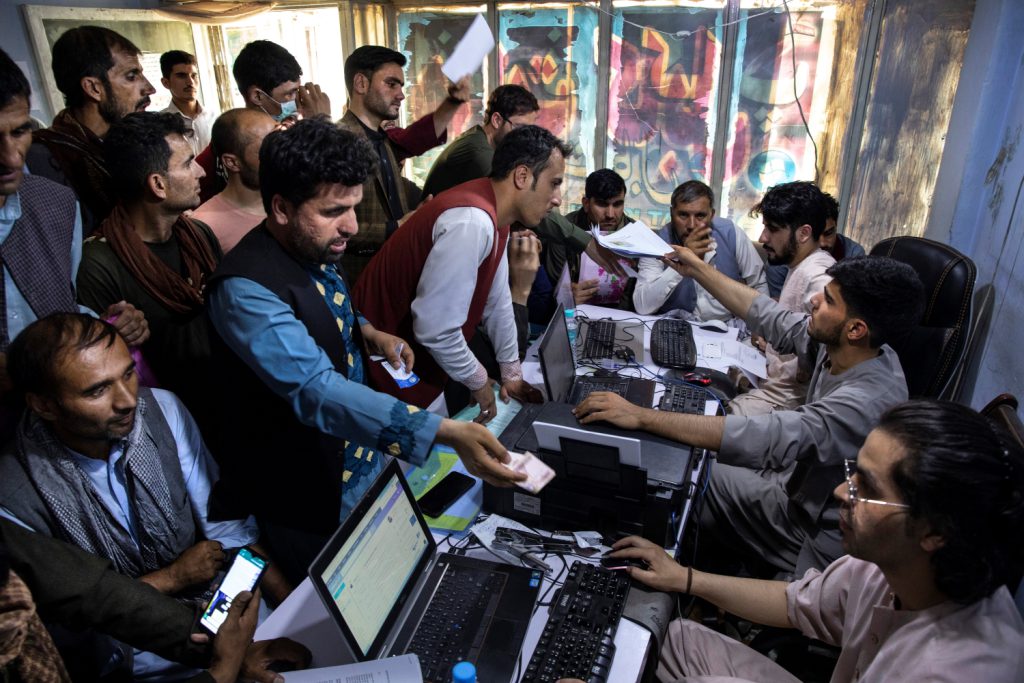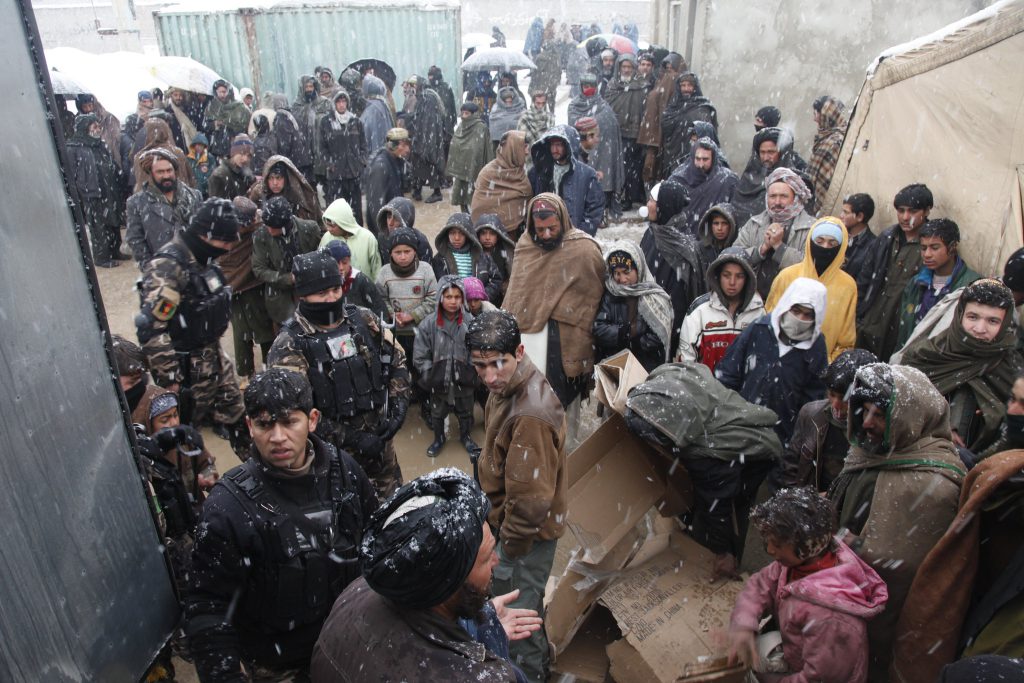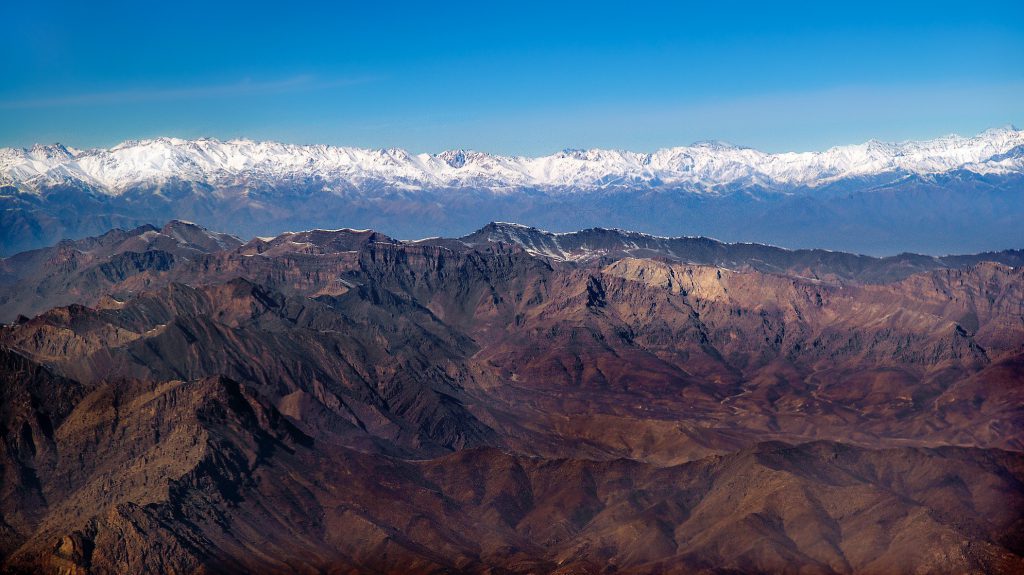How Bureaucracy Conceals Obligations to Afghan Refugees
Since the Taliban took control of Afghanistan in early August, the world has been transfixed by images from the streets of Kabul: Taliban fighters proudly patrolling the capital atop U.S. military equipment seized after the withdrawal of U.S. troops and the rapid crumbling of the U.S.-backed Afghan military. Afghan women braving the streets in protest of any future reversal of the laws that dictate their movement outside of the home. And perhaps most notably, thousands of Afghans flooding Kabul’s international airport in hopes of some path to escape—risking death while desperately clinging to the wheels and wings of U.S. military planes as they prepared for departure.
The last of the U.S. military planes took off on August 31—leaving behind tens of thousands of Afghans who put their lives on the line to assist the U.S. government and rebuild their country in the 20 years since the U.S. first invaded Afghanistan in the wake of the 9/11 terrorist attacks.
A few weeks earlier, in his August 16 speech to the nation, U.S. President Joe Biden stated that while he does not regret his decision to end America’s war in Afghanistan, “The truth is, this did unfold more quickly than we had anticipated.” While the U.S. managed to evacuate more than 123,000 U.S. citizens, Afghan allies, and other foreign nationals by the end of the month, according to one state department official, the “majority” of Afghans who helped the U.S. remain in a country now fully under Taliban rule.
As an anthropologist who focuses on human rights and, specifically, on the rights of immigrants, refugees, and asylum-seekers, I have spent much of my career on the frontlines in places where people are desperate to flee. Whether they’re escaping the devastating effects of decadeslong wars, political corruption, economic instability, or climate change, I have seen firsthand that most asylum-seekers lack time, resources, and support. And yet the demands placed on them to meet international standards for asylum would be challenging even for those well-equipped to navigate the system.
As the events in Afghanistan demonstrate, these bureaucratic hurdles are not always necessary. Sometimes they serve as an excuse for the U.S. to deny asylum to those they have promised to keep safe.
Speaking directly to Pentagon Press Secretary John Kirby as the emergency evacuations were unfolding last month, CNN Chief International Correspondent Clarissa Ward asked, “Can I offer [Afghans] your assurance that everyone who has worked with American organizations will be got out of this country safely?”
As one of the sole American reporters on the ground during the Taliban’s takeover of Kabul, Ward made clear she was the one who had to look in the eyes of those who risked their lives in service to the U.S. war in Afghanistan. She was the one who was being confronted daily with the question: “Will Americans help me like I helped them?”
Kirby responded, “I would ask you to tell them that there is a process that they can apply for through the State Department to get onto the list. … If they are through that process, I can assure them … that we in the Pentagon will do everything we can to help get them out of the country.”
Ward retorted that, for many, these words would “sound like hollow promises.”
As of August 20, more than 88,000 individuals who worked for the U.S. government in Afghanistan had applied for a special immigrant visa (SIV) for themselves and their immediate family members. Earlier that week, the Pentagon announced that the U.S. would resettle 22,000 eligible SIV recipients in the coming month. This is a fraction of the men, women, and children who are at risk due to their family’s service to the U.S.
The Afghan Special Immigrant Visa program was launched in 2009 to protect allies who risked their lives helping U.S. troops as security officers, translators, drivers, and a host of other essential jobs in Afghanistan. The requirements for application are strict. Applicants must have been employed by the U.S. for at least one year, and their “faithful and valuable” service must be proven by a letter of recommendation from their supervisor. But that’s not all. They must also contact the chief of mission of the U.S. Embassy in Kabul for a risk assessment to determine if they are in fact experiencing a serious and ongoing threat and if that threat is a direct result of their service to the U.S. In addition to SIV-specific requirements, all applicants must also pass the rigorous screening process established by the Department of Homeland Security for all potential immigrants and refugees to the U.S.
Previous anthropological research has touched on the failures of SIV programs to protect the people they’re intended to protect, noting how the programs designed for vulnerable Afghan and Iraqi allies have been plagued by bureaucratic inefficiencies, leaving thousands of applicants without answers and at risk. One report notes, “The lack of a coherent, effective strategy to support these workers … leaves applicants stranded in Afghanistan or elsewhere and vulnerable to attacks by the Taliban and criminal groups.”
This situation begs the question: Why does the U.S. not compile the necessary paperwork for their allies while they’re putting their lives on the line for the country? The onus should not be on Afghan employees to prove they are worthy of protection after their lives are at risk. This information should already be filed away for safe keeping from the start of their service to the U.S.
But as anthropologists who study the everyday workings of government show, bureaucracy is often inefficient and complicated for a reason. In modern societies, bureaucracy—which can be translated to “rule by public office”—has become synonymous with needless paperwork, unclear protocols, and long and frustrating wait times. According to one researcher, “this opacity empowers bureaucracies and bureaucrats” as they become “gatekeepers” who control the flow of valuable resources. In the case of Afghanistan, it also allows them to control the flow of vulnerable people.
Those who have served the U.S. government are not the only ones seeking to flee Afghanistan. According to the United Nations Refugee Agency, more than 400,000 Afghans were forced from their homes by violent conflict in 2021 alone and are now displaced within their country. These individuals, too, are facing an uncertain future in a country where they have no home. Especially at risk are those who will likely be persecuted by the Taliban for their gender, sexual orientation, or religious and political beliefs.
Taliban leaders claim they have changed their ways since their previous rule from 1996 to 2001. Spokesman Zabiullah Mujahid stated they would refrain from retributory violence and respect women’s rights, within the limitations of Sharia.
Yet their actions so far suggest otherwise: On August 19, for instance, all female journalists working for state-run organizations were informed they no longer had a place in the newsroom. Shabnam Dawran, a female anchor for RTA Pashto was told: “Tum ladki ho, jao apne ghar jao.” (You are a woman, go home now.)
The U.S. has more than a moral obligation to help these fellow humans in need. The country made a promise that has yet to be kept.
As someone who has worked on the ground assisting displaced populations who are seeking asylum throughout Africa, Latin America, and the Middle East, there is little more frustrating to me than hearing an official say the process begins with “apply[ing] through the State Department.”
Across world regions, U.S. imperialism has often led to the displacement of populations on the ground and the common call for local people to step up and support America’s mission whenever needed. In exchange for immediate support, both the U.S. military and U.S. embassy are quick to make assurances of future security. In the case of the United States’ “longest war”—one that has cost the nation an estimated US$2 trillion—the institutions responsible for safeguarding our Afghan allies on the ground certainly didn’t have any shortage of time or resources to prepare for our eventual departure from the region.
So, what went wrong?
Even if we’re to believe that Kirby’s words aren’t hollow, the U.S. government’s plan to provide the safety that was promised faces significant challenges.
For many people, it may be hard to imagine the enormous hurdles facing those who want to apply for the SIV program or for asylum in the U.S. but lack the basic resources to do so. There are 39 million people living in Afghanistan and not all live in Kabul, home to the country’s only international airport. Many are scattered throughout the country’s other 33 provinces.
Afghanistan, a country that’s roughly the size of Texas, is lacking in infrastructure, so travel from rural areas can require long, grueling, and expensive journeys over the Hindu Kush mountain range that traverses the country from Northern Pakistan to Tajikistan.
Travel aside, try to imagine the difficulties that finding, downloading, completing, and submitting an application would pose to those who don’t have a computer, don’t have access to the internet, or have limited English language skills.
For others, it comes down to a lack of papers. Many Afghans living in temporary encampments for the internally displaced are not able to provide the required documents to U.S. officials, such as letters verifying previous employment and documentation of the threats they are facing—but that’s because they were forced to flee their homes in the face of violence from the Taliban before obtaining the necessary paperwork.
For too many, these requirements are tantamount to a rejection—to a door being firmly shut in the face of those who were willing to put their lives on the line for the U.S. In the coming days and weeks, it is critical that those of us in the U.S. work together to find ways to keep these doors open.




































